This post is in continuation of the previous post about the visit to Big Budda (Tian Tan) Statue at Lantau Island. Po Lin Monastery and Ngong Ping Village are located near to the Big Buddha Statue. To know about how to reach these destinations, please refer the previous post about the visit to Big Buddha Statue at Lantau Island in Hong Kong.
Po Lin Monastery: Located on the Ngong Ping Plateau near the Big Buddha, this monastery is considered as the most important monastery of Hong Kong. Although it was established in 1906 much before the construction of Big Buddha statue in 1993, but the popularity of Big Buddha is stealing the glamour of this monastery. Surrounded by hilly terrains, various trees and beautiful flowers, this monastery is a nice place to visit in Hong Kong.
The main gate of monastery is located near the circular platform known as Di Tan (Altar of Earth). This mountain gate is made of the rocky stones and there are beautiful carvings at the gate. This gate was originally erected in the front of main shrine hall of the monastery, but placed at the present position after several relocation.


Crossing the mountain gate of monastery, we enter in a area covered by green trees and beautiful flowers. This area is known as Bauhinia Park. This park was mainly built to display Bauhinia, the flower of Hong Kong SAR, in the memory of Hong Kong return to China. A paved path of stones in the middle of the park leads to the main entrance of the monastery.
At the end of this park near the monastery, there is an area marked for incense burning . Various souvenir shops outside the monastery sell various sizes of incense sticks to offer as a prayer to the Lord Buddha.
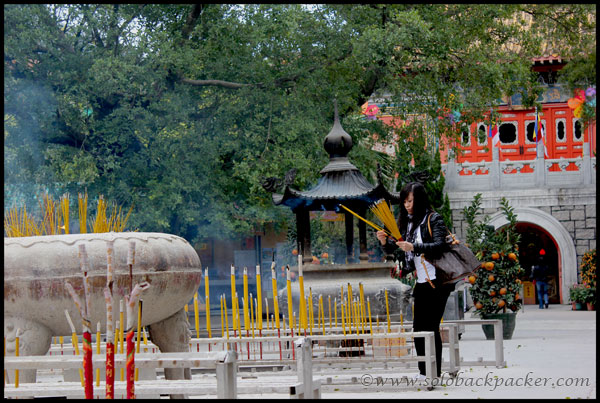

At the end of the paved path leading in to the monastery through the park, there is the main entrance of the monastery. This semi circular shaped entrance takes us to a small room with two beautiful statues. This room is known as the Hall of Bodhistva Skanda. At the upper floor of this room, there is a scripture library, houses a precious collection of Buddhist sutras and canons, including a set of Chinese Tripitaka, the Qianlong Tripitaka. This Tripitaka was presented by the Buddhist Association of China, a much treasured version, being the last official wood-block print published in China.


After passing the Hall of Bodhisatva Skanda, we reach in a courtyard. There are beautiful pavilions at the both side of the courtyard. In front of the main entrance, at the other end of the courtyard, there is Main Shrine Hall of Buddha. This hall was built in 1970. The main shrine is beautifully decorated with the flowers, paper art and dragon pictures. It consists of the three statues of Lord Buddha presenting as Past, Present and Future lives. These three statue particularly denote the Buddhas of Three Worlds, Buddha Sakyamuni of our World in the middle, Buddha Bhaisajyaguru (Master of Healing) on the left, and Buddha Amitabha (Buddha of Unlimited Light and Life Spans) on the right. Buddha Sakyamuni is attended by two acolytes, the aged one being Mahakasyapa, the younger one Ananda. Mahakasyapa was the “most austere” amongst Buddha’s ten disciples. Ananda was the “most learned”, the most well-versed with Buddha’s teachings.


Behind the main shrine hall, construction is going on for the Grand Hall of Ten Thousand Buddha. Being built in a design and style combining ancient Buddhist art and contemporary architecture, the Grand Hall will house the Hall of Ten Thousand Buddhas, Scripture Library, Dharma Hall, Permanent Ordination Hall, Exhibition Hall for Buddhist relics and artifices, and a multi-function hall.
Ngong Ping Village: This village is situated between the last terminal of Ngong Ping Cable Car and the main entrance of Big Buddha premises. It is basically a culturally themed village and has been designed and landscaped to reflect the cultural and spiritual integrity of the Ngong Ping area.



This Wishing Tree or Bodhi Tree is situated in the middle of the village at the right hand side while walking from the main entrance. This tree is adorned by the countless wishes made by its visitors, as they believe that their wishes come true, if they ask here something under the Bodhi Tree. But you can’t simply make a wish here. To make a wish, first you have to get a wish card. A wishing card can be redeemed with any purchase of HK$150 or more at Ngong Ping 360 Souvenir Shops around.

Since this village is basically developed as a thematic village to attract the tourists, prices at the various shops selling from chopsticks to Kebabs and Coffees are really at the higher end.


The Ngong Ping Village offers a lot of interesting attractions like the Ngong Ping Tea House, Walking with Buddha, Monkey’s Tale Theater, plus other establishments including restaurants, a spa, and a Starbucks outlet.
Lantau Trail: Lantau island in Hong Kong is very scenic and surprising. Because of its thick vegetation and high peaks, it offers an amazing trekking experience to its visitors. There is a well defined trek route on this island and camping is generally free at various sites. Lantau trail is opened in 1984 and and it is now the favorite trek among the tourists as well as locals. This is a well traveled trail with half kilometer marker posts , benches, maps, bathrooms, fire pits, tent camping areas, and access to the peaks or the wonderful scenery. From the coastal village of Mui Wo, two main trails goes in the Northern and Southern direction to make a complete circuit. The north trail of this trek passes through the village of Ngong Ping and goes to the Lantau Peak.

After visiting the incredible statue of Tian Tan Buddha, an amazing monastery of Po Lin and wonderful thematic village of Ngong Ping, it was the time to move on further. From the bus stand outside the Ngong Ping village, I board another bus to Tai O village to see the life of fishermen in that coastal village of Lantau Island.



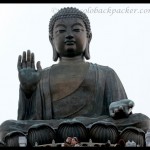
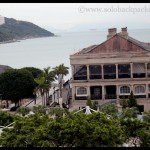
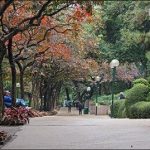
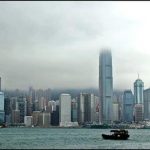
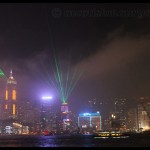
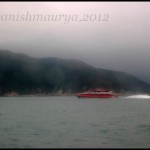
Thank you. It is very elaborate!
Congratulations….Your reviews are very much helpful. They are very detailed but at the same time easily read, simple and fantastic; even the official Hong Kong guide does not include this much detailed and vast information.
I am from Turkey and at the moment visiting HK with my wife. We will be visiting Big Buddha and Macau, and your suggestions will be very helpful to organize our program for tomorrow and the day after.
Thank you for your effort.
P.S. I subscribe to your blog.
Hi,
How did you get to Po Lin Monastery from Big Buddha?
By a simple walk. Po Lin Monastery is just in front of Big Buddha, hardly 100 meters walk. 🙂
Hi Ma’am,
Did you visit Hong Kong solo? In my case, I will be going there solo for 4 days. Is it safe for a girl to roam around Hong Kong alone?
Hi,
I am a male, visited Hong Kong solo. It is a perfectly safe city for anyone, a true global city. You can road around freely without any issue. Enjoy the nightlife also.
your reviews are really superb.. amazing.. and very much helpful….its very simple and fantastic.. you ve covered hong kong and your suggestions and guidelines are very much helpful to draft my itinerary
Thanks for the appreciation 🙂
Your post makes me more excited to visit hong kong!
How long would it take to get to Lantau Island from Tsim Sha Tsui? Do you happen to know the fares? Which would be better, taxi to Lantau island or take the MTR? I am travelling with 6 of my family members 🙂
Riza.
Hi, it will take approx one hour to reach there. For fare and other details, please read the post on Lantau Island.
What is appx time required to visit Big Buddha, Po lin Monastery & the village?
Hi, One day is good enough to visit Big Buddha, Po Lin Monastery and the Village.
Hello, it was very helpful.
I was planning of having a visit here and to take sunset photograph of big Buddha.
I just wanna know if how is your travel going to HongKong island?
Also what are the last trip for buses.
Thanks so much.
Hi, I had very nice time in Hong Kong. You can catch the last bus at about 0600 PM from Lantau Big Buddha to Tung Chung MRT. Have a nice trip.
Sir, how many days did the trip to Hong Kong take?
Depends on your choice and way of travel. I spent 5 nights in Hong Kong.